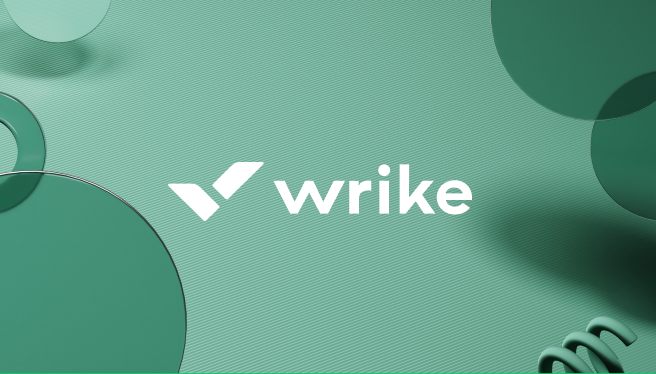I was interviewed by Bas de Bar recently. Bas has a great blog called Project Shrink. It is a valuable source of tips, ideas and other important information for project managers. Bas is also the author of "Surprise! Now You're a Software Project Manager." Those of you who are in software development might want to have a look at it. We had a conversation about the nature of Project Management 2.0, emergent structures, collective intelligence, project management software and my work on Wrike. It was a pretty long dialog, so Bas decided to publish it in parts. I will be glad to get your feedback on what I said there.
Interview with Project Shrink
- 3 min read
Related articles

Interview with Wrike for PMO Podcasts for Executives and Managers
Wrike’s founder, Andrew Filev, was interviewed for PMO Podcast and discussed better ways of managing projects with the help of Web-based software. Andrew explained how transparent integration of project work with e-mail can increase project management productivity and save time. E-mail seems to be the most popular communication tool and is familiar to everybody. Andrew told Mark Perry, the host of the show, how e-mail can be used effectively in managing and collaborating over projects with the help of Wrike.

Top-down and Bottom-up Project Management: Leveraging the Advantages of the Two Approaches
Bottom-up project management is a new strategy by which some of the world's largest companies are democratizing their business goals. And yet, there are still beneficial elements in a top-down approach.

RACI Improved: Structuring Responsibilities with the Help of Project Management 2.0 Software
In one of my recent posts I wrote that using project management 2.0 software helps project manager guide his team’s work, delegate some of his initial duties and allocate roles and responsibilities so that they are clear to everybody on the team. Project management 2.0 tools also let one apply some traditional methodologies of structuring responsibilities more effectively. Let’s take RACI as an example. Originally a RACI diagram, or RACI matrix, is used to describe the roles and accountabilities of various teams or people in project delivery and operations. It is especially useful in clarifying responsibilities in cross-functional/departmental projects and processes. The RACI diagram splits tasks into four participatory responsibility types, which are then assigned to different roles in the project. These responsibilities’ types make up the acronym RACI. Responsible (R) - offer commitment, skills, and contributions that shape a project’s final outcome. In short, this is the “doer”, who actually completes the task. This person is responsible for action/implementation. There can be several people responsible for one task. Accountable/Approver (A) - a person ultimately answerable for the correct and thorough completion of the task. There must be only one Accountable specified for each task. Consulted (C) – those who are consulted before the final decision or action is made. Informed (I) - those who are kept up-to-date on progress. Your clients, for example. Applying the RACI method provides maximum benefit when responsibilities are not clear, for example, when a project team is formed by members from several organizations, who report to different managers, have no imposed governance model and have a hard time achieving objectives on time. I agree with Michael L Smith and James Erwin who say that trying to complete a big project in bureaucratic environment without clearly establishing roles and responsibilities, is like trying to parallel park with one eye closed. RACI’s core advantage is that it helps to avoid potential responsibility uncertainty. However, despite all the benefits, the RACI model does have some disadvantages. Data collection cycle and information exchange flows may be too slow. Project management 2.0 software can help eliminate these drawbacks and speed up the communications. With project management 2.0 software, everybody can clearly see who is accountable for each task. Visibility brought by emergent structures makes it possible to keep all the responsibilities clear for everybody on the team. Emergent structures brought by the second-generation tools let have the full insight into what each RACI team member is working on. For example, A can easily follow the work of Rs. At the same time, project work can be easily adjusted to changes in the environment, by reassigning roles, changing work-breakdown structures and task flow in seconds. This flexibility helps to bring iterative and incremental practices into project management without giving away the control. Second, it is very easy to plug in responsible, consulted and informed people. Project management 2.0 software lets all the members of the RACI team work in one flexible Web-based collaborative environment. Teams can collect all the relevant information in one place, thus minimizing the time of information exchange. Everyone on the team will be able to access the data anytime he needs it without pulling information out of his colleagues. This means that team members can collaborate seamlessly, building work structures with less central control, assigning tasks and defining roles. For example, if there are several Rs assigned to one task they can work together, keeping all the relevant discussions, files, notes, links in one place that can also be accessed by A, C and I. Last, but not least, thanks to many-to-many structures, each member of the team his own perspective of a project. Each team member becomes more productive because they can follow their own portion of the work and see its relationship to the project as a whole. The RACI method, when combined with project management 2.0 technologies, allows teams to become more agile and react to changes going on inside and outside the organization at a faster pace. RACI is not the only methodology that can be made more efficient by the second-generation tools. You are very welcome to provide your examples in the comments.


